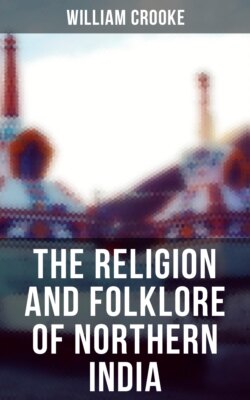Читать книгу The Religion and Folklore of Northern India - William Crooke - Страница 41
На сайте Литреса книга снята с продажи.
Mountain-worship; the Himâlaya.
ОглавлениеTable of Contents
“He who thinks of Himâchal (the Himâlaya), though he should not behold him, is greater than he who performs all worship at Kâsi (Benares); as the dew is dried up by the morning sun, so are the sins of mankind by the sight of Himâchal.”138 Such was the devotion with which the early Hindus looked on it as the home of the gods. Beyond it their fancy created the elysium of Uttara Kuru, which may be most properly regarded as an ideal picture created by the imagination of a life of tranquil felicity, and not as a reminiscence of any actual residence of the Kurus in the north.139
From early times the Himâlayan valleys were the resort of the sage and the ascetic. Almost every hill and river is consecrated by their legends, and the whole country teems with memories of the early religious life of the Hindu race. As in the mythology of many other peoples,140 it was regarded as the home of the sainted dead, and the common source or origin of Hinduism. Its caves were believed to be the haunt of witches and fairies. Demons lurked in its recesses, as at the Blockberg, where, as Aubrey tells us, “the devils and witches do dance and feast.”141 Many of its most noted peaks are the home of the deities. Siva and Kuvera rest on Mount Kailâsa; Vaikuntha, the paradise of Vishnu, is on Mount Meru. The whole range is personified in Himavat, who is the father of Gangâ and Umâ Devî, who from her origin is known as Pârvatî, or “the mountaineer.” One of the titles of Siva is Girisa, the “mountain god.” His son Kârttikeya delights in the weird mountain heights.
